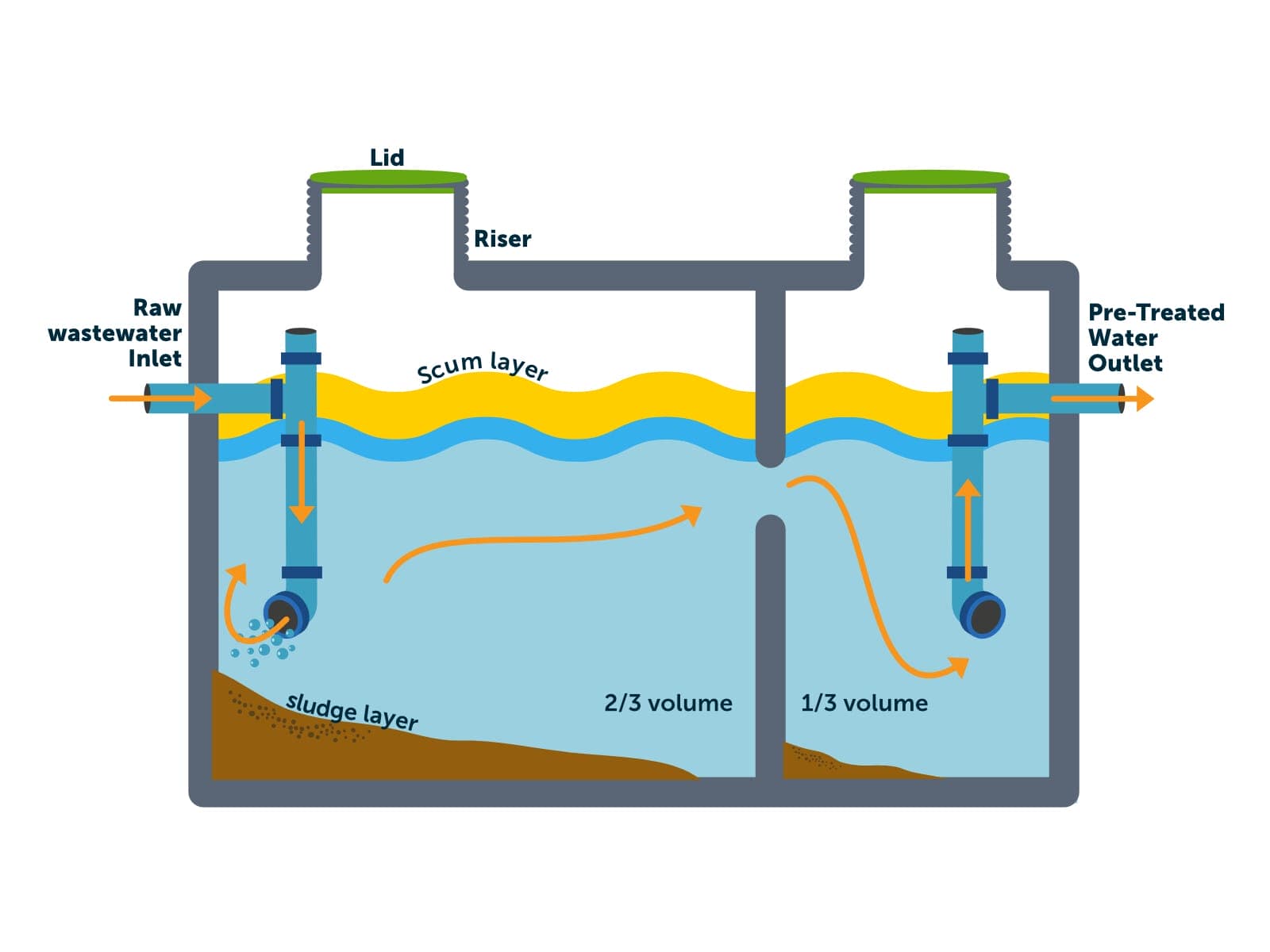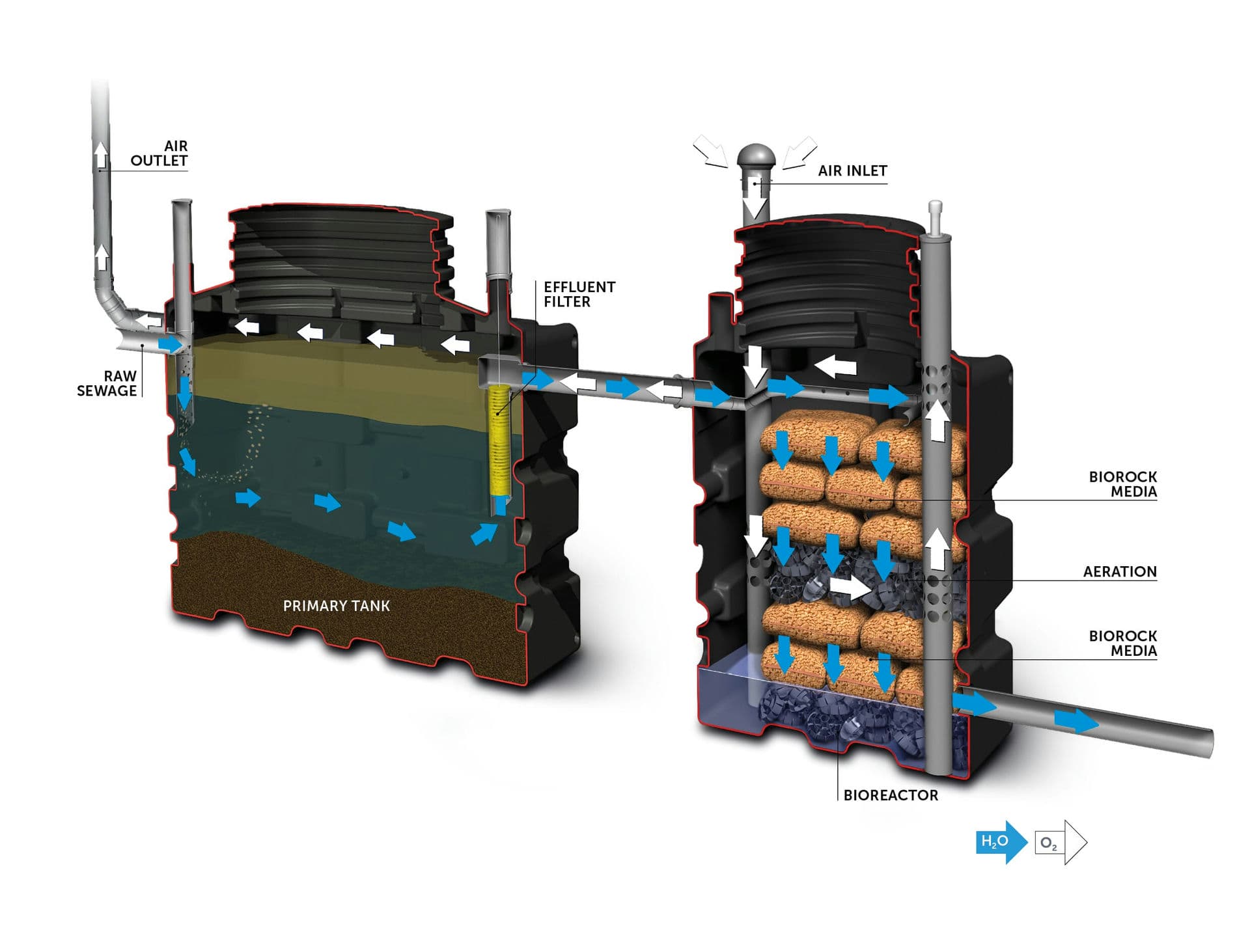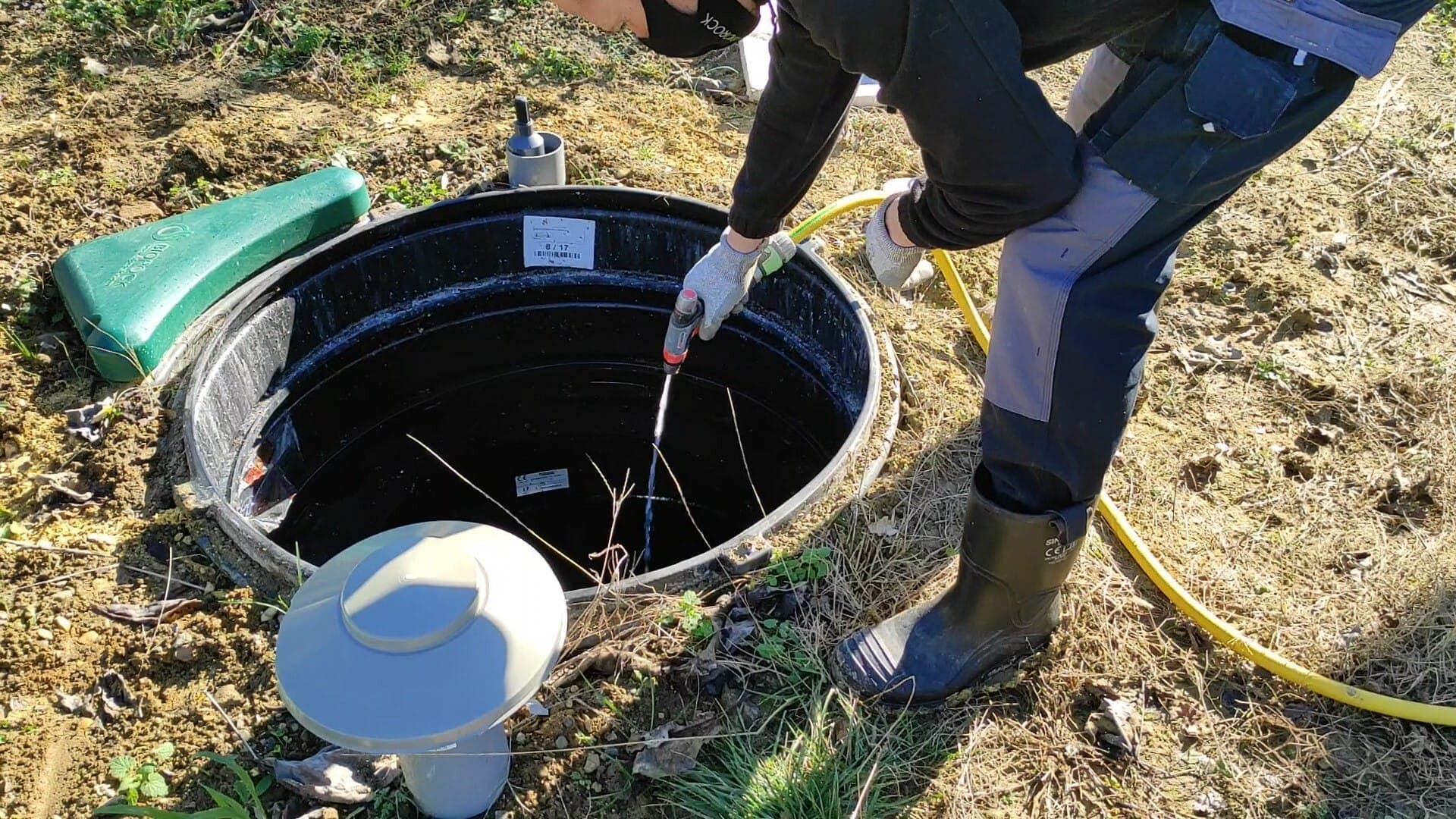It is a misconstrued assumption to refer to septic tanks and wastewater treatment plants as one and the same, when in fact they are two very distinct entities that both serve the purpose of purifying waste. They are actually two wastewater treatment steps that are crucial and dependable. When discussing wastewater treatment, we should always look at the process as a whole. That’s why we wanted to explain it to you step by step.
If you're looking for an environmentally friendly way to dispose of wastewater, you may be wondering if a septic tank is a right option for you. This blog post will discuss the differences between septic tanks and wastewater treatment plants. Let’s start with septic tanks.
Primary tanks are conceived for the very first step of every wastewater treatment system. If we want to purify the wastewater that comes out of our homes, we obviously need to contain it, which is the first job of a septic tank. More importantly, the primary tank will provide enough time for wastewater to settle and clarify. This is why they are often referred to as "primary clarifiers" or "settling tanks".
Ever wondered what exactly is meant by clarifying sewage water? Gravity adds its own force to the process, separating fats, oils, greases, and organic particles from the wastewater. It's a straightforward solution with great results!
While a septic tank shares similarities with the primary stage of wastewater treatment, it isn't sufficient to qualify as an effective water treatment plant. Wastewater treatment plants contain more than one phase: there's always an additional process following the initial step. Therefore, a septic tank cannot be used as a wastewater treatment plant.
However, for better water purification, it is possible to retrofit most of the septic tanks with a wastewater treatment plant (see our ECOROCK solution). The following points will help you understand the difference in detail.

When the untreated wastewater enters the tank, heavier solids will settle below while fats and oils float up top. This allows for the separation of any organic components before passing through a highly-efficient effluent filter that ensures only water continues onto the treatment unit.
The wastewater treatment unit or wastewater treatment plant is where the real water treatment takes place. There are several types of treatments that can be used, but the principle remains the same across most systems.
At BIOROCK, we’ve developed a pretty unique bacteria carrier that’s made out of minerals. Why? Because inorganic media are as effective as organic ones, except they last longer in time.

The purification performance is by far the most important difference between septic tanks and wastewater treatment plants. Effluent is wastewater that flows out of a treatment plant. A septic tank specifically collects fats, oils, and solids; however, its effluent requires additional purification in order to prevent any hazardous contaminants from entering the environment
A wastewater treatment plant is an optimal choice for water purification with an all-in-one system. Its effluent has no environmental impact and can be released into nature or used for irrigation purposes. At BIOROCK, we care about protecting our planet, and we offer a range of sewage treatment plants with a treatment efficiency of around 99%.
Unlike a septic tank, wastewater treatment plants can easily treat massive loads of wastewater and even ‘shock loads’ with convenience. Our sewage treatment plants are designed in such a way that they can serve from a 4-persons system to up to 300-person systems.
Septic tanks are the obvious choice here since they do not require any electricity. Nevertheless, to ensure thorough water purification, you must install a treatment plant along with your septic tank.
At BIOROCK, we have revolutionized wastewater treatment with our non-electric sewage treatment plants. Our technology eliminates the need for electricity, allowing us to provide a cost-effective and eco-friendly solution without compromising performance or efficacy. In comparison to traditional wastewater treatments that rely on electrical power, our natural ventilation process substantially reduces operating costs while still providing exceptional results. Besides, if there is a need to increase ventilation, our wind-driven ventilators are there to assist.
In comparison to septic tanks that need desludging every 6-12 months, BIOROCK wastewater treatment plants will only require emptying every 3-4 years. This is a considerable difference and demonstrates the efficiency of these systems in reducing sludge build-up and prolonging service intervals. Longer emptying intervals also reduce annual costs.
 The chances of clogging are greater in septic tanks, so they need to be maintained and monitored regularly. Even though wastewater treatment plants aren't as likely to become blocked, they should still be serviced due to their mechanical components.
The chances of clogging are greater in septic tanks, so they need to be maintained and monitored regularly. Even though wastewater treatment plants aren't as likely to become blocked, they should still be serviced due to their mechanical components.
In order to reduce the chances of breakdown and maintenance costs, non-electric wastewater treatment plants are your ideal choice. All that is required for upkeep is an annual filter check and water distribution assessment - ensuring you will have a lasting system in place.
If you want a septic system that purifies wastewater thoroughly, you cannot pass on having a wastewater treatment plant installed. Septic tanks are an outdated technology in terms of wastewater treatment, which needs a second stage to produce effluent that is clean and safe for the environment. Without this secondary treatment, contaminants may be present in the water discharged into nature.
Even though septic tanks and wastewater treatment plants differ in several ways, the most crucial difference is the effluent quality. Septic tanks and wastewater treatment plants complete each other and work best together. That’s why we created the MONOBLOCK all-in-one wastewater treatment plant: an ultra-compact plant that includes both primary and secondary wastewater treatment.
For those of you who already have a functioning septic tank, we also created ECOROCK, a wastewater treatment plant that can be retrofitted to any existing primary tank, so anyone can upgrade its system to stop worrying about soil contamination.
We believe everyone has the right to access clean and safe water, and with BIOROCK you can be certain that your wastewater will be treated correctly. Our products are certified according to the highest European standards, so you know you’re getting reliable technology for an affordable price. Contact us today for more information on how we can help upgrade your system.